-
 William Duffy
13The photo is the back of a Cessna 152 seat. I would really like to know what material they used for the sling back then. The dull orange material has a fine weave, is very thin and seems to be coated. Over time the adhesive let’s go and your butt is on the floor. This aircraft has not been in production since 1985. I have seen this sling material on several seats and believe it to be original. Anyone familiar with this?
William Duffy
13The photo is the back of a Cessna 152 seat. I would really like to know what material they used for the sling back then. The dull orange material has a fine weave, is very thin and seems to be coated. Over time the adhesive let’s go and your butt is on the floor. This aircraft has not been in production since 1985. I have seen this sling material on several seats and believe it to be original. Anyone familiar with this?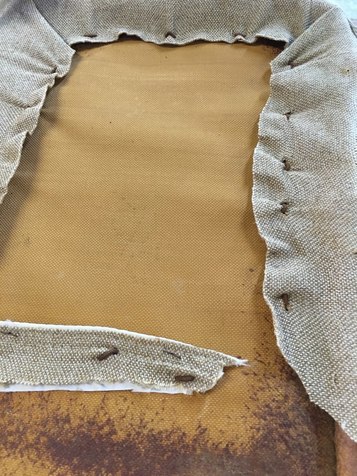
-
Jack Purdue
18I've done several things including banding material (I've got a plastic banding roll and tool for banding) and I band both ways three times. Then cover with canvas and glue to frames rails. The material you speak of is Cessna's own and is similar to Denier or the covering used on rag wing airplanes, only stronger. If it's still in OK shape, I've pulled it off completely and reglued with contact cement. Be sure to repaint the frames when it's off as you can get the whole frame. Regular canvas won't hold or last without some support. Please make sure you're using CERTIFIED aircraft material (must have burn certs with it) or a mechanic can ground the plane without them.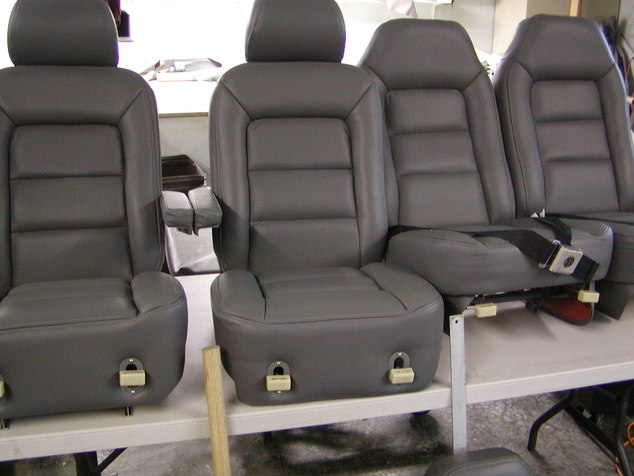
-
 Natalie Pankonin
6I recently redid some Piper seats that had that. I peeled off what hadn't rotted off and cleaned up the frames. Then I installed seat springs and FAA certified canvas and reglued them. That made a nice base for the seat foam and they no longer 'bottomed out' when they sit down. You can find what you need from Skandia
Natalie Pankonin
6I recently redid some Piper seats that had that. I peeled off what hadn't rotted off and cleaned up the frames. Then I installed seat springs and FAA certified canvas and reglued them. That made a nice base for the seat foam and they no longer 'bottomed out' when they sit down. You can find what you need from Skandia -
 Al Decker
22Yikes! ...and can be somewhat confusing. But, non-compliance is not an option.
Al Decker
22Yikes! ...and can be somewhat confusing. But, non-compliance is not an option.
The aircraft's designated usage will dictate which of the F.A.R. specs that are required to be met
https://www.faa.gov/documentLibrary/media/Advisory_Circular/AC_25.853-1.pdf -
Joe Chiaramonte
12The regulations can be very confusing but they need not be. First off unless you are working on aircraft with weight in excess of 12,500 pounds you are dealing with FAR 23.853. This usually requires just a horizontal burn certificate. Skandia is a great source and can provide Burn Certifications for materials as well. As for seat suspensions Airtex Interiors carries a product that works fine. The material used by Cessna is a type of Herculite (sp), Beechcraft also uses the same type material and calls it out as Herculite in some there older parts manuals. It is not cost effective to use materials from the aircraft manufacturers that makes Skandia or Airtex sound options. Your best bet for aircraft upholstery is to use materials from sources that provide Burn Certifications, some include them in price of yard goods other charge an additional fee. Either way the material most likely will be certified for FAR 25.853 which is more stringent. This subject is near and dear to my heart as aircraft represent about 80% of my work load. I am also in a unique position as I am a licensed mechanic and inspector and provide log book entries and document packages with my work. Documentation is most often missing from the majority of aircraft I inspect. When in doubt use certified materials and give owners documentation. -
 William Duffy
13Hi Joe - thank you for the feed back and everyone else of course. Could you share with us suppliers of certified materials you favor in addition to the two mentioned above. It would be great if more of the Hog ring community could share their aviation Upholstery knowledge. Thanks again.
William Duffy
13Hi Joe - thank you for the feed back and everyone else of course. Could you share with us suppliers of certified materials you favor in addition to the two mentioned above. It would be great if more of the Hog ring community could share their aviation Upholstery knowledge. Thanks again. -
Joe Chiaramonte
12Two of the suppliers I use on a regular basis are Douglass interior products in Bellevue WA and Aircraft Interior Products in Witchita. Coming from my side of both industries I know there is a lot of conflicting information about the rules and regulations, what can be done and what can't. One thing to keep in mind is that is the aircraft owners responsibity to keep his aircraft in an airworthy condition not the mechanics. Use of approved material helps him do that. -
 Al Decker
22Great answer & info, there, Joe.
Al Decker
22Great answer & info, there, Joe.
Didn't have a whole lot of time to go into a detailed response on my post.
I also have an AME ticket, (interiors) but my experience is certainly not anywhere near comparable with your background!
You're one of those guys us pups were looking to for clarification of the FARs when they got the better of us! Lol!
My favorite aspect of upholstery I've ever been involved in. -
 William Duffy
13Check out this article on part 91 aircraft. Very interesting.
William Duffy
13Check out this article on part 91 aircraft. Very interesting.
https://www.avweb.com/news/maint/182839-1.html -
 Al Decker
22(quote) "The DER said it's an excellent question, but couldn't answer it." (unquote)
Al Decker
22(quote) "The DER said it's an excellent question, but couldn't answer it." (unquote)
Lol! Like I said..."somewhat confusing."!
If the guys that are supposedly the interpreters of the regs can't decipher them in order to meet conformity, then how can they be strictly enforced?
Welcome to the world of aviation interior refurb! -
Joe Chiaramonte
12I live it almost on a daily basis. I look at it this way it's all black and white. When you try to read into it is where it gets sideways. The regulations were written by lawyers with a broad brush. I have read this article an number of times and shake my head every time. Why didn't the writer just use approved products to begin with and save the hassle. My suggestion is if your worried about it just use certified materials or at least have what you want to use flame tested prior to starting work. Customer needs to know this in advance to save him in the long run. A lot ofthe mechanics out there have no idea of what they are looking at and since interiors are allowed to be done by owners I am always amazed at what I see. I have purchased and sold material to some of my maintenance customers over the years for them to have their friends do the work just so I could have no worries signing off an annual inspection. I can't ground the airplane but I can refuse to sign it off, that's my CYA move. -
Joe Chiaramonte
12As a side note. If a customer carries his seats or whatever to you to cover he/she picks material you suggest material with burn certification they chose whatever they want I would do the job. As I said before it is the owners responsibility to maintain the aircraft in an airworthy condition and no one elses I'm in a different tougher situation I have licenses to lose if I put it in. If I don't have the licenses I would put it in following my own advise and let them deal with it as the writer had to. I've been a mechanic for 30 years and been splitting my time Stitchin for 38 years. I'm still learning every day and have got a lot of help reading posts on this forum Hopefully one day I'll be as good as some of you all from what I've seen -
 John Pollock
10Hi I'm working on my first airplane interior. Thanks for all the helpful information!
John Pollock
10Hi I'm working on my first airplane interior. Thanks for all the helpful information!
I use Coats Ultra Dee Bonded polyester thread and DAP Weldwood Landau top contact cement in my automotive interiors. Are these products suitable for small personal air planes? -
Jesse Durkee
19When I had done one a couple years ago, I had asked Skandia, if I needed a special glue. They told me that I was fine with using what I had on hand, which is what you are using. -
Joe Chiaramonte
12John,
You should be good with what you got.
Most of the older aircraft used what appears to be a lot like the Dap Weldwood, they were very messy and a lot of seats have it sprayed all over the paint (like the ones I'm doing now). Later models are using a different product more of a clear type glue and it starts to give way after about 5 or 6 years.
If you get into any of the larger aircraft I recommend using glue that is made to meet the appropriate regulations, Bostick makes some, very expensive.
Thread is also never much of an issue, polyester threads are always a good choice.
Usually burn certs for fabric, leather and foam are what mechanics look for (if they even do) when doing an inspection on an airplane for the first time. -
 John Pollock
10Great! Thank you so much @Joe Chiaramonte! I'm purchasing all the material from Douglass interior products. I think they provide burn certs with all their materials.
John Pollock
10Great! Thank you so much @Joe Chiaramonte! I'm purchasing all the material from Douglass interior products. I think they provide burn certs with all their materials.
Thanks for all the help!
Haha! Ill make sure not to make a mess of the glue. -
 Peter Pittel
11I have been told there are special flame resistant materials for aviation use. You could be held liable for not using these product. For that reason I have turned down a few plane seats as the customer did not want to use those products.
Peter Pittel
11I have been told there are special flame resistant materials for aviation use. You could be held liable for not using these product. For that reason I have turned down a few plane seats as the customer did not want to use those products. -
Jesse Durkee
19actually the owner is liable. You just have to provide the material burn certificates, and the plane’s mechanic signs off that the work was done correctly. If you feel uncomfortable that’s fine. If you are doing an ultralight home built, or antique you do have more flexibility. One of my customers is an A&P. I actually sewn up the fuselage and wings for him.
Welcome to The Hog Ring!
This forum is only for auto upholstery pros, apprentices and students. Join today to start chatting.
More Discussions
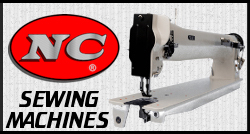
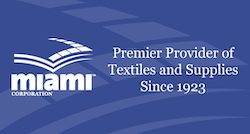



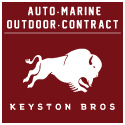


- Terms of Service
- Useful Hints and Tips
- Sign In
- Created with PlushForums
- © 2025 The Hog Ring






